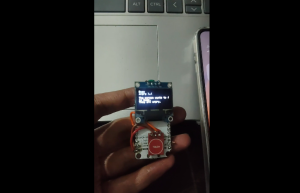A new method could help treat deadly brain tumors my transporting them to a more operable area.
The method cannot completely eliminate the cancer, but it can reduce tumor size as seen in animal models, a Georgia Institute of Technology news release reported.
"We have designed a polymer thin film nanofiber that mimics the structure of nerves and blood vessels that brain tumor cells normally use to invade other parts of the brain," Ravi Bellamkonda, lead investigator and chair of the Wallace H. Coulter Department of Biomedical Engineering at Georgia Tech and Emory University, said in the news release. "The cancer cells normally latch onto these natural structures and ride them like a monorail to other parts of the brain. By providing an attractive alternative fiber, we can efficiently move the tumors along a different path to a destination that we choose."
Treating Glioblastoma multiforme cancer (GBM) is difficult because it is aggressive and develops in inoperable regions of the brain.
Anjana Jain, first author of the GBM study and assistant professor in the Department of Biomedical Engineering at Worcester Polytechnic Institute applied research she had done on biomaterials for spinal cord regeneration to the study.
"The signaling pathways we were trying to activate to repair the spinal cord were the same pathways researchers would like to inactivate for glioblastomas," Jain said in the news release. "Moving into cancer applications was a natural progression, one that held great interest because of the human toll of the disease."
Tumor cells invade by releasing certain enzymes, but this process is extremely energy expensive for the cancerous cells.
"Our idea was to give the tumor cells a path of least resistance, one that resembles the natural structures in the brain, but is attractive because it does not require the cancer cells to expend any more energy," Jain said.
The researchers created "fibers made from polycaprolactone (PCL) polymer surrounded by a polyurethane carrier," the news release reported. The fibers were then implanted into mice with BGM tumors. The fibers effectively led the cancerous cells to a "tumor collector" made of gel containing the drug cyclopamine, which kills cancer cells.
The team found that after 18 days the tumor size was significantly reduced in the mice who received the treatment.
"If we can provide cancer an escape valve of these fibers, that may provide a way of maintaining slow-growing tumors such that, while they may be inoperable, people could live with the cancers because they are not growing," Bellamkonda said. "Perhaps with ideas like this, we may be able to live with cancer just as we live with diabetes or high blood pressure."
The new method will require rigorous testing before it can be approved as a treatment for humans.
"We couldn't be more thrilled with the progress that Georgia Tech and Professor Bellamkonda's lab have made in helping find a solution for children with both inoperable brain tumors and for those suffering with tumors in more invasive areas," Phil Yagoda, one of the organization's founders, said in the news release. "With this research team's dedication and vision, this exciting and exceptional work is now closer to reality. By enabling the movement of an inoperable tumor to an operable spot, this work could give hope to all the children and parents of those children fighting their greatest fight, the battle for their lives."
© 2025 HNGN, All rights reserved. Do not reproduce without permission.








